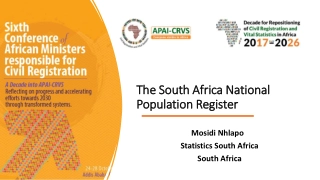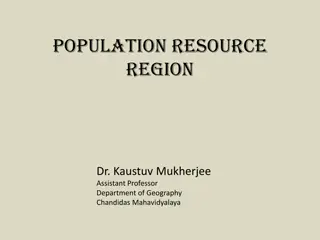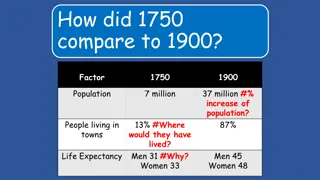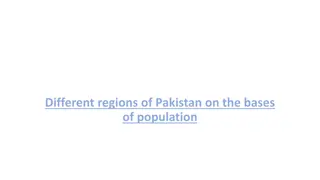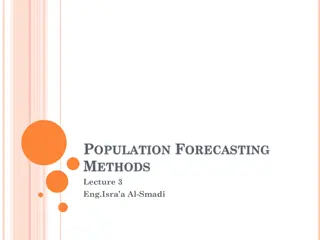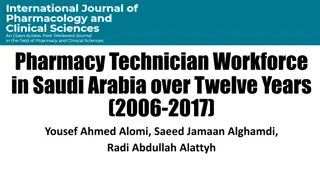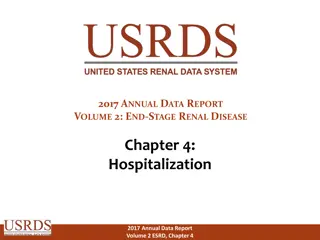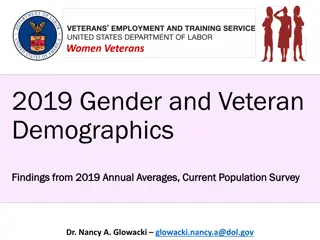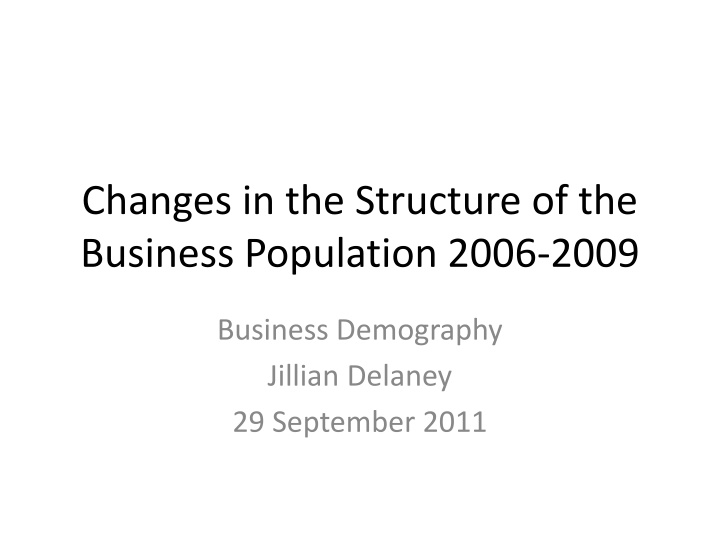
Business Demography and Employment Trends
Learn about Business Demography, its data sources, methodologies, and significance in analyzing changes in the business population and employment trends from 2006 to 2009. Discover how administrative data is used to produce accurate insights and why traditional survey methods are inadequate for this purpose.
Download Presentation

Please find below an Image/Link to download the presentation.
The content on the website is provided AS IS for your information and personal use only. It may not be sold, licensed, or shared on other websites without obtaining consent from the author. If you encounter any issues during the download, it is possible that the publisher has removed the file from their server.
You are allowed to download the files provided on this website for personal or commercial use, subject to the condition that they are used lawfully. All files are the property of their respective owners.
The content on the website is provided AS IS for your information and personal use only. It may not be sold, licensed, or shared on other websites without obtaining consent from the author.
E N D
Presentation Transcript
Changes in the Structure of the Business Population 2006-2009 Business Demography Jillian Delaney 29 September 2011
What is Business Demography? The Business Demography release contains: Numbers of active enterprises Employment data Changes in enterprise population: Newly birthed enterprises Ceased enterprises Enterprise survivals
Business Demography Data Data currently available for years: 2006 2007 2008 2009 Internationally comparable methodology Required under EU legislation Available on CSO website: http://cso.ie/shorturl.aspx/80
How to produce Business Demography? Use of Administrative Data for producing Business Demography
Use of Administrative Data for Business Demography Traditional survey methods won t work Coverage of full business population required Births data focuses on small new enterprises Good quality Business Register required Based on administrative data Accurate employment figures Indicate activity for non-employers Identify enterprises active for each year
Employment Data: P35 Returns Advantages Disadvantages No beginning and end dates for employees No part time / full time breakdown Time lag of 11 months after end of reference year All employees in an enterprise group may be filed against one enterprise, but on different survey returns Highly accurate measured by comparison with survey returns Full coverage of every employer
Non-Employing Enterprises: Administrative Data Available Corporation Tax / Income Tax returns VAT returns Concept close to turnover Limited coverage of turnover, but very good coverage of amounts of VAT paid on sales VAT exempt industries not included Files received quarterly Data not available for full calendar year Time lag 15 months after end of reference year
Business Demography Data Extraction Method Administrative data from P35, VAT, CT and IT extracted for each reference year available Dataset of all tax units active in each reference year created Linked up to Business Register to add NACE code, legal form, geographical information Early version created using older CT and IT returns, updated once CT and IT files received.
Issues with Estimating Enterprise Births and Deaths A new birth usually requires a new tax registration But new tax registration doesn t always mean a new birth, e.g. Changes of ownership Group restructuring Also, tax de-registration may not mean an enterprise death, e.g. Takeover Merger
Results Employment and Enterprise Population Changes
Employees in Active Enterprises by Year, Business Economy 1450000 1400000 1350000 1300000 1250000 1200000 1150000 1100000 1050000 2006 2007 2008 2009
Employees in Active Enterprises by Sector and Year 400000 350000 Manufacturing (C) Construction (F) 300000 Wholesale and retail trade; repair of motor vehicles and motorcycles (G) 250000 Transportation and storage (H) 200000 Accommodation and food service activities (I) Information and communication (J) 150000 Financial and insurance activities excluding activities of holding companies (K-642) 100000 Professional, scientific and technical activities (M) 50000 Administrative and support service activities (N) 0 2006 2007 2008 2009
Active Enterprises by Sector and Year 70000 Manufacturing (C) 60000 Construction (F) Wholesale and retail trade; repair of motor vehicles and motorcycles (G) 50000 Transportation and storage (H) 40000 Accommodation and food service activities (I) Information and communication (J) 30000 Financial and insurance activities excluding activities of holding companies (K-642) 20000 Real estate activities (L) Professional, scientific and technical activities (M) 10000 Administrative and support service activities (N) 0 2006 2007 2008 2009
Employees in Active Enterprises in Construction by Size Class and Year 120000 100000 80000 1-4 employees 60000 5-9 employees 10 or more employees 40000 20000 0 2006 2007 2008 2009
Employees in Active Enterprises in Information and Communication by NACE group and Year 18000 16000 14000 12000 Publishing activities (58) 10000 Telecommunications (61) Computer programming activities (6201) 8000 Computer consultancy activities (6202) 6000 4000 2000 0 2006 2007 2008 2009
Employees in Active Enterprises in Real Estate by NACE group and Year 7000 6000 5000 Renting and operating of own or leased real estate (6820) 4000 Real estate agencies (6831) 3000 Management of real estate on a fee or contract basis (6832) 2000 1000 0 2006 2007 2008 2009
Results Enterprise Births and Related Employment
Enterprise Births by Year and Size Class 16000 14000 12000 10000 0 employees 1-4 employees 8000 5-9 employees 10 or more employees 6000 4000 2000 0 2006 2007 2008 2009
Employees in Enterprise Births by Year and Size Class 4500 4000 3500 3000 2500 1-4 employees 5-9 employees 2000 10 or more employees 1500 1000 500 0 2006 2007 2008 2009
Enterprise Births by Sector and Year 7000 6000 5000 Construction (F) 4000 Wholesale and retail trade; repair of motor vehicles and motorcycles (G) 3000 Professional, scientific and technical activities (M) 2000 1000 0 2006 2007 2008 2009
Persons Engaged in Birthed Enterprises by Sector and Year 7000 Manufacturing (C) 6000 Construction (F) Wholesale and retail trade; repair of motor vehicles and motorcycles (G) 5000 Transportation and storage (H) 4000 Accommodation and food service activities (I) Information and communication (J) 3000 Financial and insurance activities excluding activities of holding companies (K-642) 2000 Real estate activities (L) Professional, scientific and technical activities (M) 1000 Administrative and support service activities (N) 0 2006 2007 2008 2009
Persons Engaged in New Births that Survived One Year by Sector and Year 12000 10000 8000 Construction (F) Wholesale and retail trade; repair of motor vehicles and motorcycles (G) 6000 Accommodation and food service activities (I) Professional, scientific and technical activities (M) 4000 2000 0 2007 2008 2009
Conclusion Wealth of detailed data available for research Highly dependant on administrative data Feedback and queries are welcome to: busreg@cso.ie jillian.delaney@cso.ie

